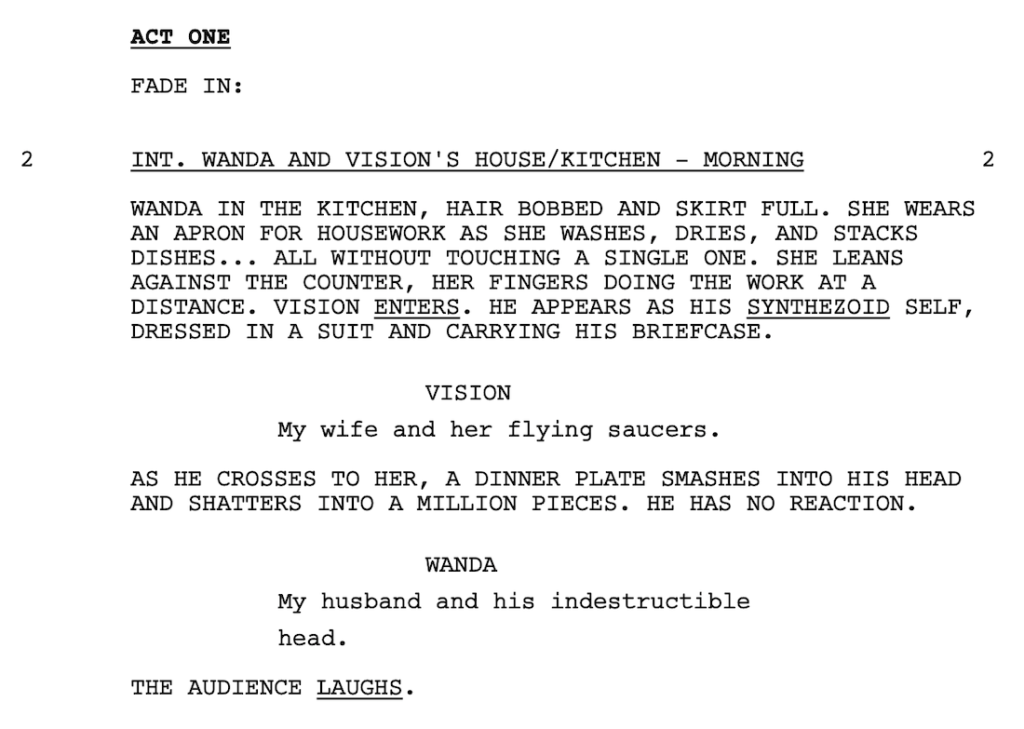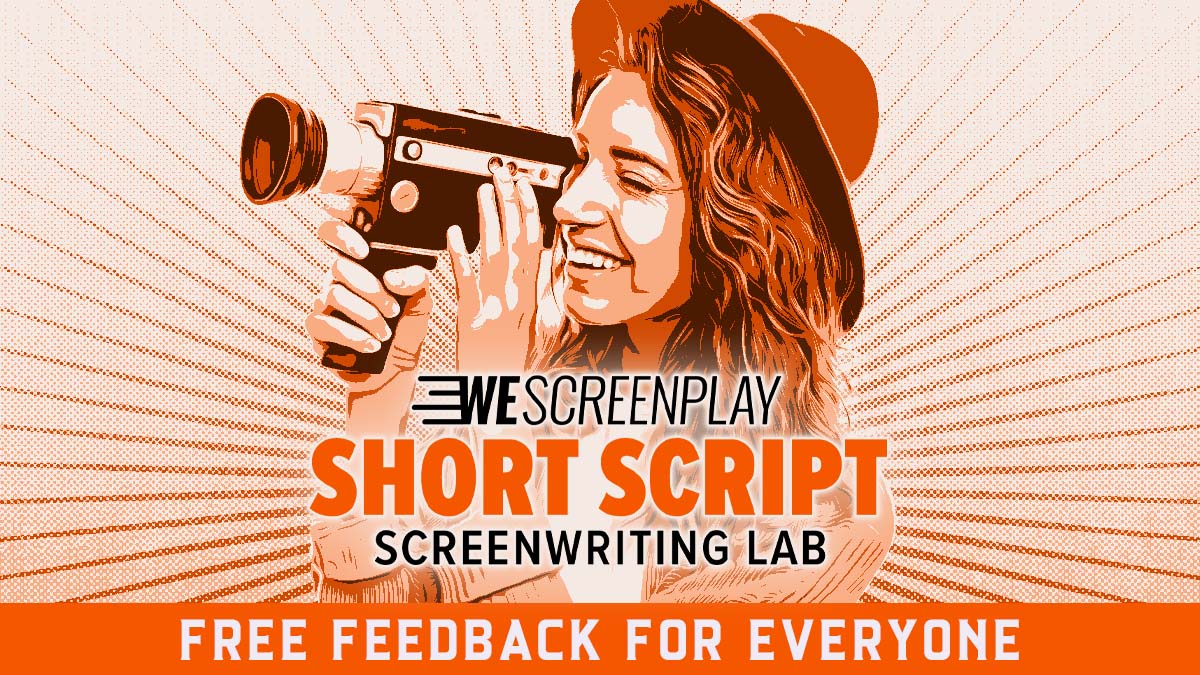
Whether for network, cable, or streaming, there is a big demand for TV shows — and that’s great news for screenwriters who are in search of ways to break into the industry. But before you start typing away on that spec or pilot, you have to ask yourself what type of show are you writing.
No, I’m not talking about genre, length, or anything like that — I’m talking about cameras. Stay with me.
There are some important formatting differences depending on whether you’re writing a multi-cam or single-cam episode that you’ll want to know as you prep your next project.
Multi-Cam vs. Single-Cam
These terms derive from the actual shooting format. “Multi-cam” shows were traditionally shot on a studio stage in front of a live television audience with multiple cameras shooting each take. Think I Love Lucy, Friends, Big Bang Theory, or the pilot of WandaVision.
Single-cam comedies started making a name for themselves more recently, with hits like Sex and the City, Modern Family, and The Office raising the prestige level of television sitcoms.
Tonally and structurally, they have significant differences that screenwriters must be familiar with, so let’s go over them.
 Final Deadline ends September 15th!
Final Deadline ends September 15th!
Multi-Cam Script Format
The multi-cam format looks very different from single-cam or feature screenplays. Because a multi-cam is filmed like live theater with multiple cameras capturing the story (and fewer takes given for coverage), the script serves to bring attention to specific actions.
Take this excerpt from the WandaVision pilot:
A multi-cam tonally might be a little more over-the-top with humor, playing to that live audience laughter, while a single-cam can be more grounded and subtle with humor and throwaway jokes.
The biggest differences are that action lines are in all caps and dialogue is double-spaced. As a result, multi-cam scripts will tend to clock in between 52-58 pages, even though the episode will end up with about a 22-minute run-time. But there are more specifications as well:
- All of the action and scene descriptions are in CAPS
- CHARACTER NAMES are underlined the first time that they appear.
- Character entrances and exits are often underlined, and there are more stage directions as well, much like a play — i.e. “MR. HART EXITS.”
- SOUNDS AND SPECIAL EFFECTS are underlined.
- SCENE HEADINGS are usually underlined as well.
- Dialogue is double-spaced.
Single-Cam Script Format
Single-cam formatting is what you may already be used to. As with feature formatting, the action lines and dialogue use regular capitalization and single-spacing, as seen in this excerpt from Brooklyn Nine-Nine:
While there are ongoing debates about a few preferences (slug lines: bold or regular? Underlined or not underlined??), there tend to be some main rules to go by:
- CHARACTER NAMES are capitalized the first time that they appear.
- SOUNDS AND SPECIAL EFFECTS might be underlined or CAPITALIZED or BOTH. (Be consistent)
- Dialogue is single-spaced.
A single-cam script will generally be between 25-32 pages long with a run-time of 22 minutes. While cable and streaming episodes have room for variation, that 22 minutes is the run-time for a traditional half-hour comedy with commercial breaks.
Do Your Research
The most important thing you can do — whether writing single-cam or multi-cam — is research the show you are writing for. Each show will have its own rules and specifications, so if you’re writing a spec script for an existing series, utilize their formatting and remain consistent (in other words, if someone SLAMS a door on page 3, they shouldn’t SLAM their enemy’s head into a wall on page 47).
If you’re writing an original pilot, the best thing to do is pick a show with the same vibe as your idea and mimic their formatting.
Conclusion
I recommend reading a variety of multi-cam and single-cam scripts and then watching their corresponding episodes. This is great research to become familiar with their execution and to get really clear on jokes per page, formatting, and tonal differences. You can find tons of mutli-cam and single-cam scripts on the TSL Script Library — and they’re free to download.
This kind of research might even help you hone in on which format you want to write for your next script.
 Shannon Corbeil is a writer, actor, and filmmaker in Los Angeles with recent appearances on SEAL Team and The Rookie. An Air Force veteran, her articles have been published in Business Insider, We Are The Mighty, and Military.com. She has written and produced hundreds of digital videos with millions of views. You can read more about her on her website or come play on Instagram and Twitter!
Shannon Corbeil is a writer, actor, and filmmaker in Los Angeles with recent appearances on SEAL Team and The Rookie. An Air Force veteran, her articles have been published in Business Insider, We Are The Mighty, and Military.com. She has written and produced hundreds of digital videos with millions of views. You can read more about her on her website or come play on Instagram and Twitter!


















